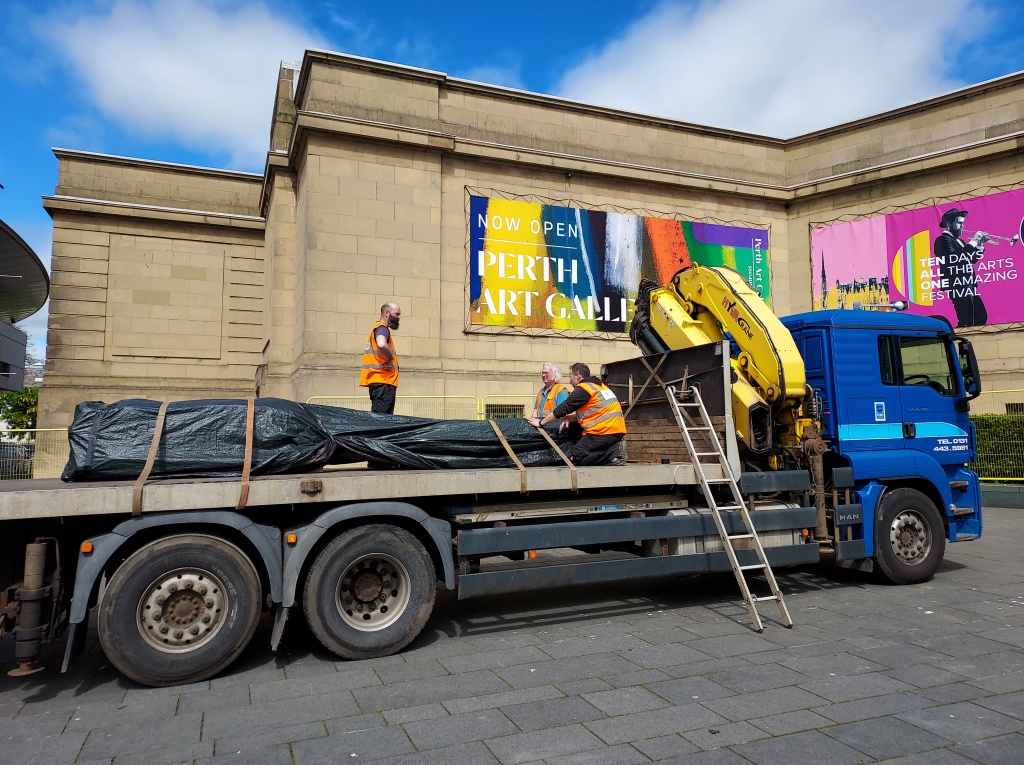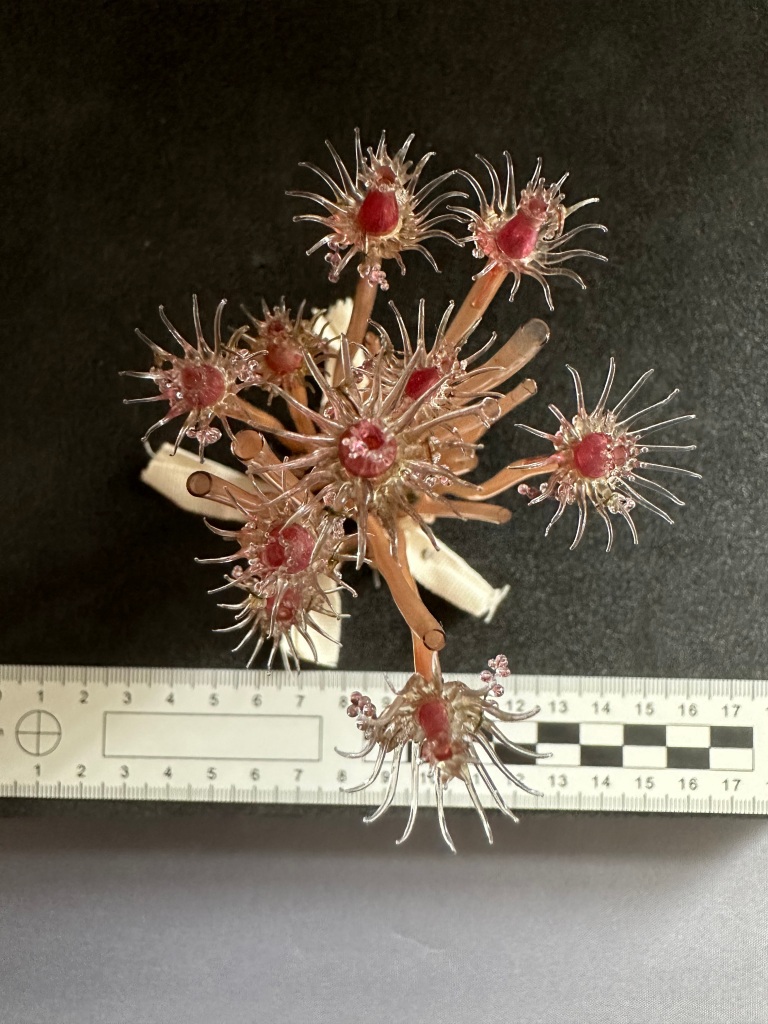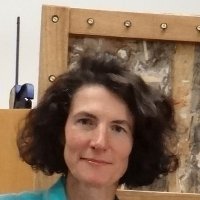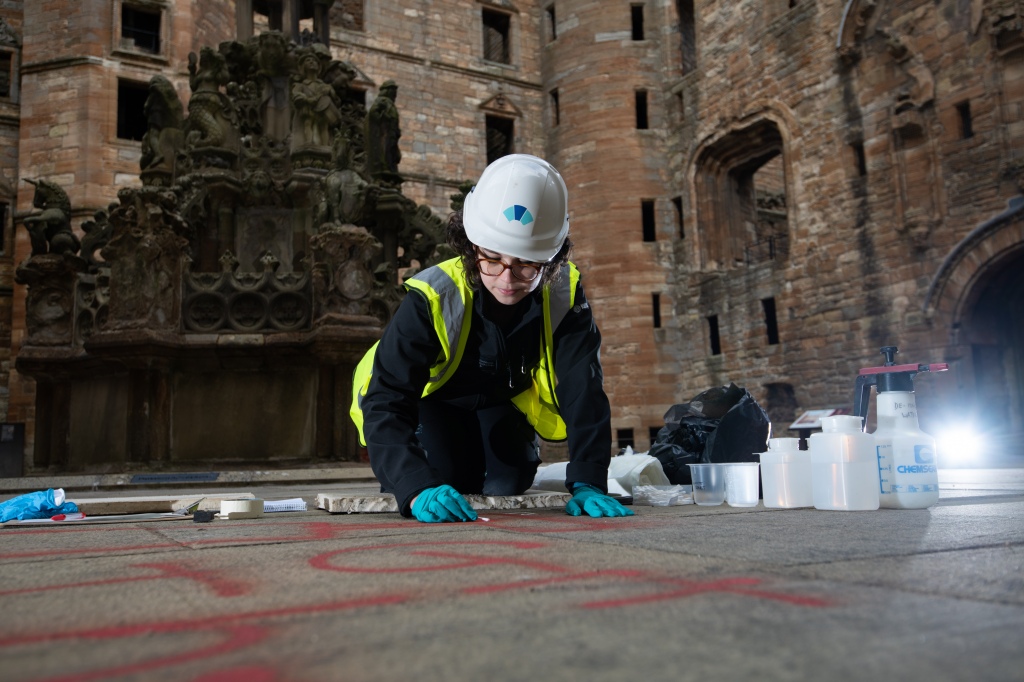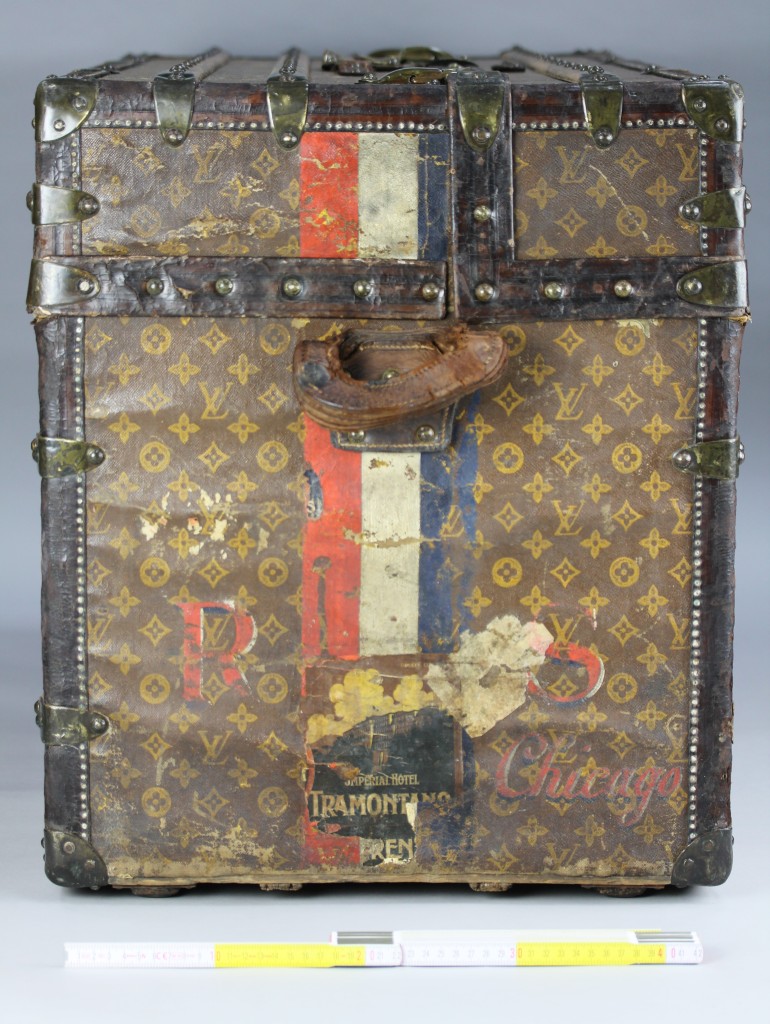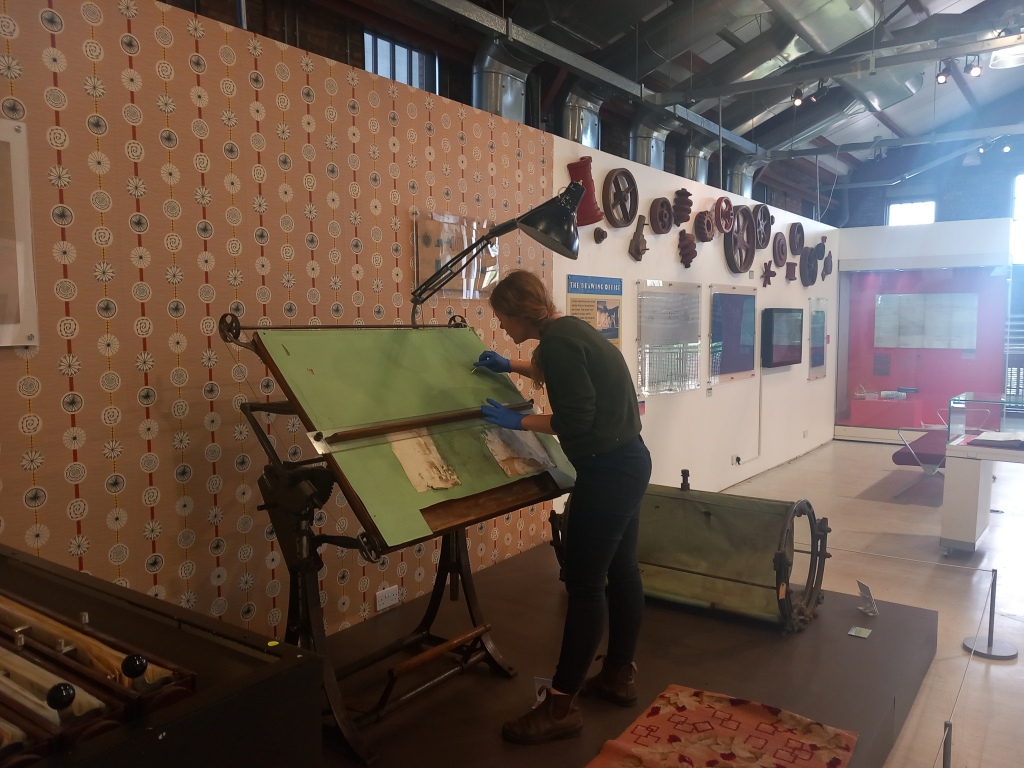About the author: Lesley Scott ACR is Regional Conservator for Edinburgh & East at The National Trust of Scotland.

An exhibition of a selection of Scottish artist Allan Ramsay (1713-84) paintings and 18th century textiles are the backdrop to examine the clothing, jewellery, and hairstyles the high society woman depicted in the paintings are wearing, and through that investigate related trades that were in Edinburgh during the mid-18th century.
The featured paintings and textiles, owned by The National Trust for Scotland, are normally presented within original room settings of properties in the North and East of Scotland, and in the case of a sackback gown and rare 18th century textile accessory, in long term storage.
There was a strong emphasis from the initial exhibition concept and collaborative planning with the regional curator and regional teams to ensure conservation was given a prominent voice, and that the specialist conservators and art handlers skills that were integral to enabling the items to be displayed were celebrated.
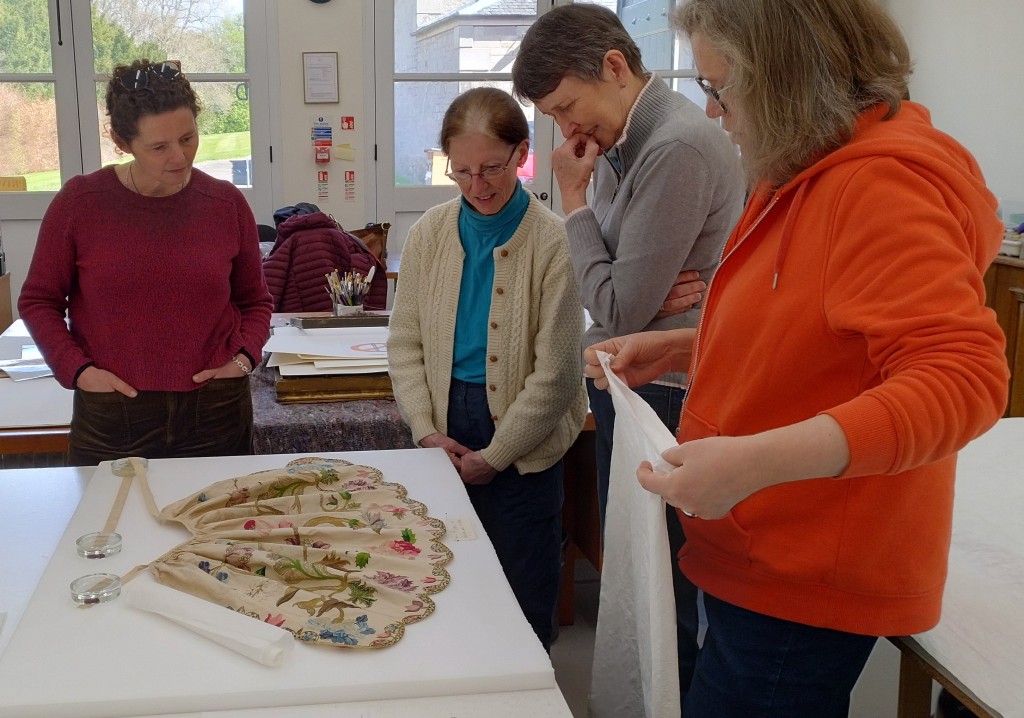
The approach taken for the remedial conservation of the paintings and textiles was firstly to enable stability for display, but also ensure any remedial intervention did not adversely alter or unbalance the appearance of the paintings and frames for when they return to their properties at the end of the exhibition. And that the textiles were available to an audience to encourage discussion around sustainable fashion, research and access, with a replica dress made as part of the engagement activities to fulfil the audiences desire ‘to touch’, with planned improvements to their longer-term storage for after display.
Painting, frame and textile conservators in Scotland were very generous in allowing either filming of their processes, group visits to their workshops or undertook remedial works whilst being public facing through conservation in action in The Georgian House.
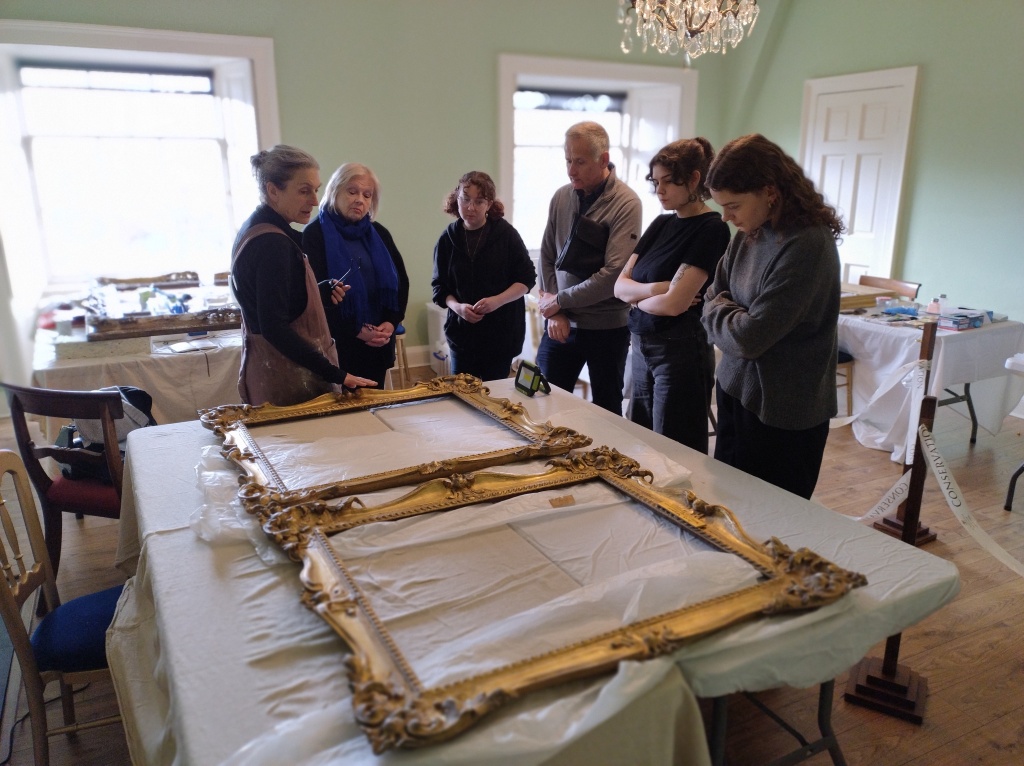
The Trust is supported by volunteers who contribute their time and enthusiasm, some with a strong emotive attachment to the collections at the properties they volunteer at, so it was paramount that these non-specialists understood the remedial treatments and conservation approach taken in the run up to the exhibition opening. They are a conduit to be able to promote the conservation work of the Trust as exhibition attendants for the duration of the exhibition, facilitating interactions with visitors.
Alongside Conservation in Action, CPD events in frame conservation and gilding were run using non-collection practice pieces. Also undertaken in front of the public this offered an opportunity for collection care staff and volunteers to work side by side with the specialist conservators and art handlers, who were willing to support learning with understanding of their remedial treatments. Furthermore, the public could ask questions about the practices being undertaken, see the collections close-up and collection care staff could learn more about the items they care for.

Unlike a museum most of the Trust’s collections are on open display within their room settings so conservation practices are frequently carried out in full view of the public in the form of preventive care. The desire was to show that conservation is ongoing, time and resource consuming and a labour-intensive process rather than a ‘behind the scenes’ activity and that it involves a high level of expertise and knowledge to understand materials and how they are affected by the environments they are displayed in.
Putting conservation at the forefront of access and engagement activities fulfils the public’s understanding of where membership, entry price and donations are spent and satisfies current appetites for seeing conservators undertake complex and skilled work.
This approach could not have been achieved were it not for the freelance conservators in Scotland willing to collaborate and be so generous with their experiences. Thanks are extended to Egan Matthews & Rose, Colleen Donaldson ACR, Owen Davison, Tuula Pardoe ACR and art handlers Philip Pestell and Duncan Marquiss.
Ramsay & Edinburgh Fashion Exhibition opened 7th June 2024 and runs till 24th November 2024 at The Georgian House, Edinburgh.


